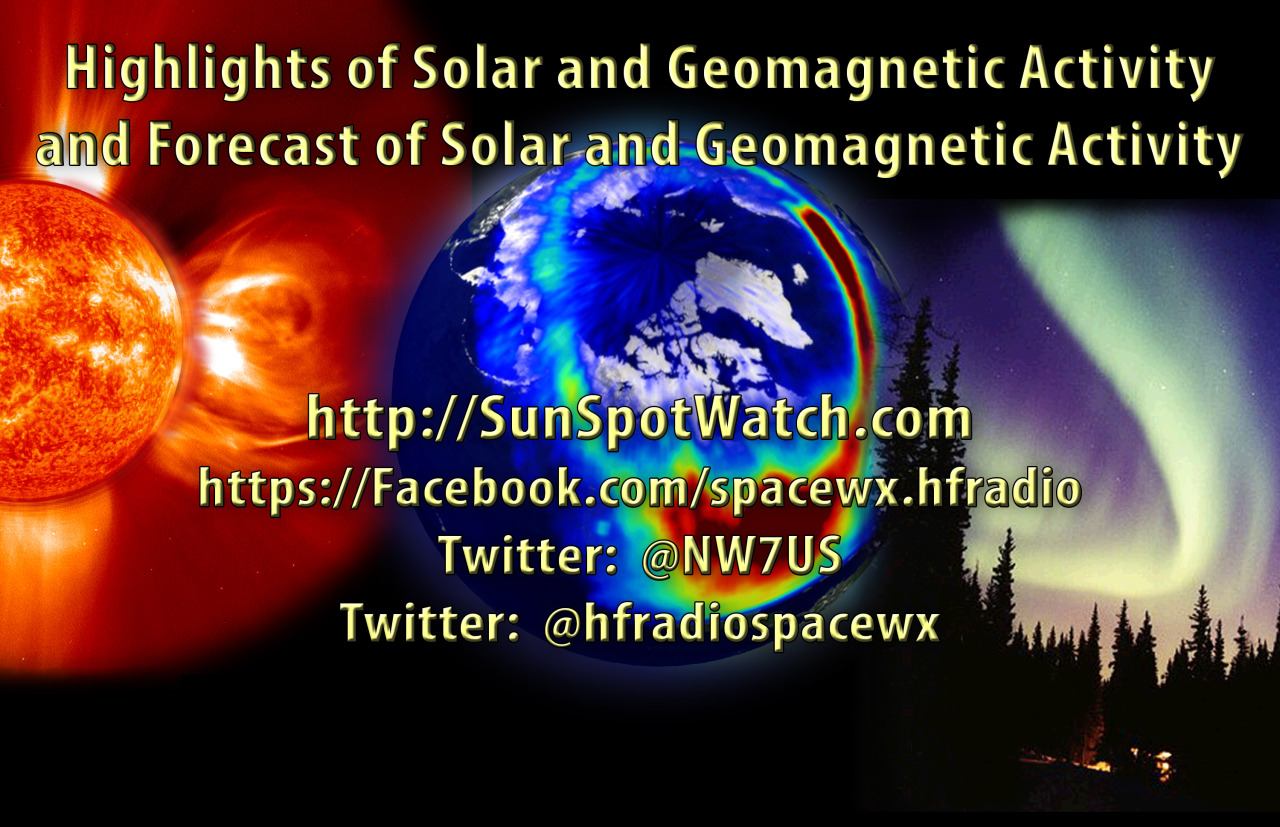 Weekly Propagation Summary – 2015 Jun 08 16:10 UTC
Weekly Propagation Summary – 2015 Jun 08 16:10 UTC
Here is this week’s space weather and geophysical report, issued 2015 Jun 08 0221 UTC.
Highlights of Solar and Geomagnetic Activity 01 – 07 June 2015
Solar activity was low this period. Low to mid-level C-class flare activity dominated the period and Region 2361 (N16, L=105, class/area=Dai/110 on 06 Jun) was responsible for the bulk of the activity. Region 2361 produced a total of nine C-class flares throughout the week, the largest of which was C8/Sf flare at 0947 UTC on 04 Jun. Region 2360 (N15, L=132, class/area=Eac/140 on 07 Jun) grew in total sunspot count, area, and magnetic complexity late in the week but was only responsible for three low-level C-class flares this period. In addition to the low-level solar activity, multiple disappearing solar filaments and eruptive prominence liftoffs were observed throughout the week, but none resulted in Earth-directed coronal mass ejections.
No proton events were observed at geosynchronous orbit.
The greater than 2 MeV electron flux at geosynchronous orbit was at normal levels throughout the period.
Geomagnetic field activity was at quiet levels throughout the period under an ambient solar wind environment with unsettled levels observed early on 01 Jun and late on 07 Jun which were attributed to minor perturbations in the solar wind.
Forecast of Solar and Geomagnetic Activity 08 June – 04 July 2015
Solar activity is expected to be at low levels with a slight chance for M-class (R1-Minor) flare activity for 08-16 Jun due to the flare potential from Regions 2360 (N15, L=132), 2361 (N16, L=105), and 2362 (N07, L=100). As Regions 2360, 2361, and 2362 rotate off the visible disk, very low levels of solar activity are expected with a chance for C-class flare activity for 17 Jun-04 Jul.
No proton events are expected at geosynchronous orbit.
The greater than 2 MeV electron flux at geosynchronous orbit is anticipated to reach high levels on 10-14 Jun with moderate levels likely on 15-19 Jun in response to an enhanced solar wind environment caused by the influence of coronal hole high speed streams (CH HSSs). Normal levels are expected for the remainder of the period.
Geomagnetic field activity is expected to reach active levels on 08, 10 Jun with G1 (Minor) geomagnetic storm conditions anticipated on 09 Jun in response to a recurrent negative polarity CH HSS. Unsettled geomagnetic field conditions are expected on 11-12 Jun as CH HSS effects subside. A recurrent positive polarity CH HSS is expected to bring about isolated periods of unsettled conditions on 15 Jun. Generally quiet field conditions are expected for 16 Jun-03 Jul with unsettled levels likely again on 04 Jul due to a solar sector boundary crossing ahead of a negative polarity CH HSS.
Don’t forget to visit our live space weather and radio propagation web site, at: http://SunSpotWatch.com/
Live Aurora mapping is at http://aurora.sunspotwatch.com/
If you are on Twitter, please follow these two users: + https://Twitter.com/NW7US + https://Twitter.com/hfradiospacewx
Get the space weather and radio propagation self-study course, today. Visit http://nw7us.us/swc for the latest sale and for more information!
Check out the stunning view of our Sun in action, as seen during the last five years with the Solar Dynamics Observatory (SDO): https://www.youtube.com/watch?v=zXN-MdoGM9g
We’re on Facebook: http://NW7US.us/swhfr














I am a serious CW operator. Weekly propagation summary will be more helpful to me for the DXing.